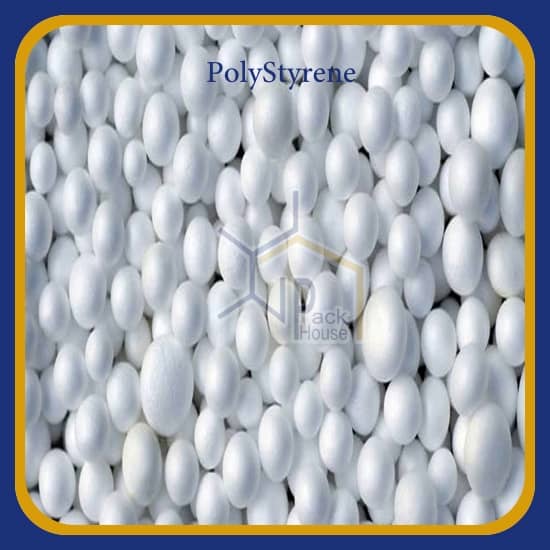
What is polystyrene?
List of Contents
Polystyrene (PS) is a general purpose plastic that is used to produce a large number of consumer products. Polystyrene, as a rigid plastic, is often used in products that require clarity, such as food packaging and laboratory materials.
Polystyrene, when combined with various colored materials, additives or other plastics, is used to make home appliances, electronics, auto parts, toys, garden pots and equipment and more.
Expanded polystyrene
A foam-shaped material made of polystyrene called expanded “polystyrene” (EPS) or extruded PS (XPS) is valued for its insulating and cushioning properties.
Polystyrene foam is widely used for making home and home insulation, lightweight protective packaging, corrugated boards, food service and food packaging, auto parts, road and road stabilization systems, etc. Be. This foam can be more than 95% air.
“Polystyrene” is made by filament or polymerization, styrene, the main chemical in many products.
Styrene is also naturally present in foods such as strawberries, cinnamon, coffee and beef.
Applications of polystyrene
PS in home appliances
Refrigerator, air conditioner, stove, microwave, vacuum cleaner, mixer. These appliances are often made of polystyrene (solid and foam) because Polystyrene is ineffective, meaning it does not react with other materials and is cost-effective and durable.
PS in the car
Polystyrene (solid and foam) is used to make many car parts. Including handles, tool panels, trim, energy-absorbing door panels and sound-absorbing foam. Polystyrene foam is also widely used in child restraints.
PS in electronics
PS is used for enclosures and other parts of televisions, computers, and all kinds of IT equipment, where a combination of form, function, and beauty is required.
PS in food service
Polystyrene food service packaging is usually better insulated, keeps food fresher, and costs less than other options.
PS in insulation
Polystyrene lightweight flooring provides excellent thermal insulation in many applications, such as building walls and ceilings, refrigerators and industrial refrigeration installations. PS insulation is ineffective, durable and resistant to water damage.
Polystyrene in medicine
PS has clarity and ease of sterilization. It is therefore used for a wide range of medical applications, including tissue culture trays, test tubes, petri dishes, diagnostic components, test kit containers, and medical devices.
PS in packaging
PS is widely used in both solid and foam to protect consumer products. CD and DVD cases, food packaging, meat / chicken trays, and egg cartons are typically made of Polystyrene to protect against damage or spoilage.
Answers to important questions about PS
What do public health organizations say about polystyrene food service packaging?
Public health officials encourage the use of sanitary and disposable food packaging (such as polystyrene) in appropriate conditions. Disposable food service packaging can help reduce foodborne illness in homes, hospitals, schools, nursing homes, cafeterias and restaurants.
What do regulatory agencies say about the safety of PS food service packaging?
In the United States, the FDA regulates exactly all food packaging materials, including PS . The FDA has stated for decades that Polystyrene is safe for use in contact with food. The European Commission / European Food Safety Authority and other regulatory bodies have reached similar conclusions.
What do scientific experts say about the safety of polystyrene food service packaging?
From 1999 to 2002, a 12-member international panel of experts selected by the Harvard Risk Analysis Center conducted a comprehensive review of the potential health risks associated with the workplace and the styrene-exposed environment.
The scientists looked at all the published data on the amount of styrene in the diet due to migration from food contact packaging. The scientists concluded that there was no concern about exposure to styrene through food or from PS used in food contact programs, such as food packaging and containers.
Is it possible for materials to be transferred from packaging to food?
All packaging – glass, aluminum, paper and plastic (such as Polystyrene) – contains materials that can be transported in very small quantities to foods or beverages. This is one of the reasons why the FDA regulates food packaging in the first place. Rest assured that the amount of material that may actually be transferred is safe.
Experimental data provided to the FDA show that the transfer of styrene from PS food products is negligible and is expected to be significantly below the safety limit set by the FDA itself. 10,000 times less than the FDA receives daily.
Where does styrene come from?
There is an array of foods and drinks. Its chemical structure is similar to cinnamon aldehyde (the chemical that creates the taste of cinnamon). Styrene is also produced as a building block for materials used in the manufacture of automobiles, electronics, boats, recreational vehicles, toys and countless other products.
How can people be in contact with styrene?
Individuals can come in contact with styrene through small amounts that may be present in the air (primarily car exhaust and cigarette smoke) and in food and packaging. PS is naturally present in many foods such as cinnamon, beef, coffee beans, peanuts, wheat, oats, strawberries and peaches. In addition, the FDA has approved polystyrene as a food additive that can be added in small amounts to cooked products, frozen dairy products, candy, gelatin, pudding and other foods.
What is polystyrene made of?
Many people mistakenly use the name STYROFOAM® to refer to ps in food services. STYROFOAM® is a registered trademark of Dow Chemical, which refers to its branded construction products.
What are the uses of PS?
Polystyrene has been used as a chemical for more than 70 years to make materials used in a wide range of end products, such as food containers, rubber tires, building insulation, carpets and boats, corrugated boards, residential kitchens. , Countertops, bathtubs and shower enclosures are used.
What is the difference between styrene and polystyrene?
There is a difference in chemistry. Styrene is a liquid that can be chemically linked to form polystyrene, a solid plastic that exhibits various properties. Polystyrene is used to produce a variety of consumer products such as food containers, cushions for electronic transport and fine insulation.
————————————————– ————
PackHouse is a supplier and seller of various polymer products, including polystyrene in various grades with high quality and competitive prices in the market. To supply and purchase this material, call the experts of the polymer department at 02186053175.
Or for a free consultation, enter your email name and contact number in the box below so that the colleagues of the technical department can contact you.
————————————————– ————
Source:
